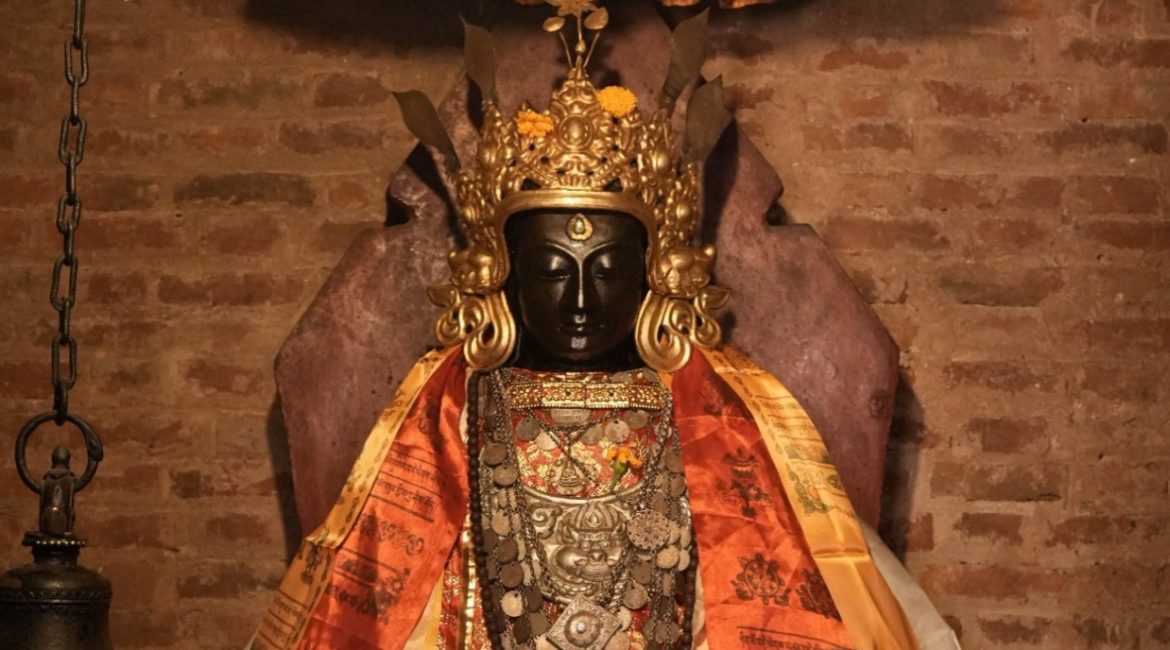By Anjana Timalsina
The life of Shakyamuni Buddha is one of the most timeless sagas of world history. Buddhists and non-Buddhists alike admire the teachings of Buddha and feel encouraged to transform their lives by his example. The Buddha was a prince-turned-great master who devoted his life to teaching about the path of enlightenment to those who seek. He was such an empath that he wanted all beings to be free from samsara. This was his answer to destiny’s call.
On his life path as a great master and spiritual teacher, Shakyamuni Buddha gave his first teaching in Ishipatana; now known as Sarnath. His teachings here are recorded in the Dhammacakkappavattana Sutta. His former companions were those first five students who received the teaching of Buddha and became closer to the path of enlightenment. Buddhist scriptures even mention that gods and celestial beings from the deva realms descended to listen to his teachings.
Shakyamuni Buddha gave his second teaching at Gridhrakuta Parvat, or Vulture Peak. His foremost disciples and celestial beings were the audience here. Here, the Buddha taught what would eventually be compiled as the corpus of the Prajnaparamita Sutras. How were they preserved, and how did it take so long for the world to know about them?
After the Parinirvana of the Buddha, Buddhism spread across the Indian subcontinent and Central Asia. Around the turn of the Common Era, communities that increasingly called themelves “Mahayana” began to circulate written scriptures as opposed to earlier oral traditions. They put great effort into sourcing those teachings, knowing that the way to liberation lay in those sutras. Those manuscripts were safely kept, along with other various Mahayana Buddhist literature, in super-monasteries (mahavihara) like Vikramshila and Nalanda.
However, between the 11th and 12th centuries, Turkic Muslim armies invaded the Indian subcontinent. The attacks eventually lead to the destruction of these super-monasteries, libraries, and repositories of Buddhist knowledge. Most of the texts, scriptures, and manuscripts were obliterated. Entire regions once host to the monasteries were emptied of Buddhists.
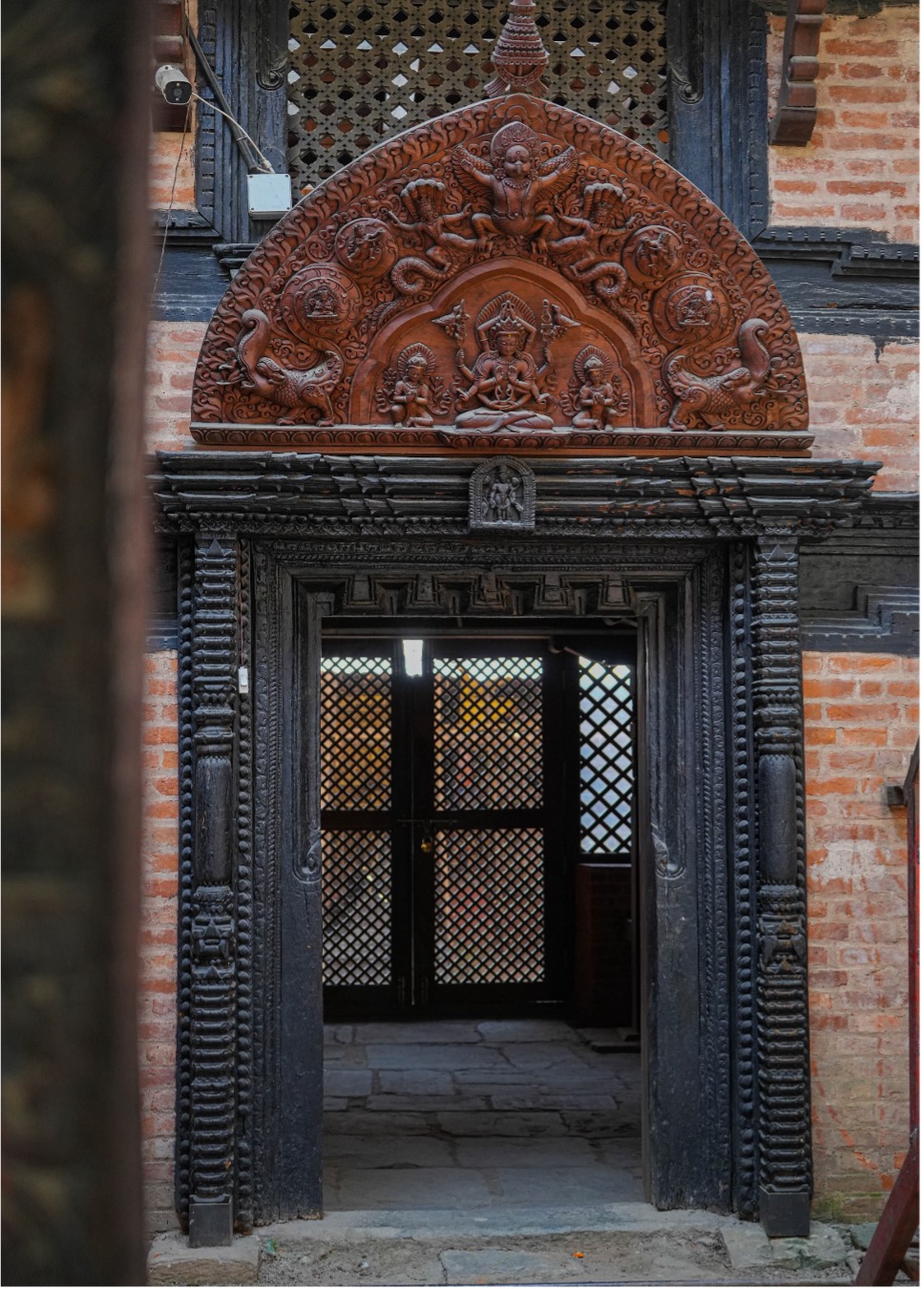
Just when everyone thought the teachings of Buddha were forever lost, the region of what is today modern Nepal became safe havens for many great Buddhist masters. One such example can be seen in the Bhagwan Bahal of Thamel, which literal meaning is Bhagwan Bihar. Its official name is Bikramshila Mahabihar, with “mahabihar” directly reflecting its status as a super-monastery, Nepalese style.
According to the local legend, the Mahabihar was already in existence since the “Dwapar Yug,” which is one of the four eons in Nepalese Hinduism. It is believed that the Mahabihar was established around 360 years ago, with monastics being a constant presence in the monastery. Presently, the Bihar is under the stewardship of the Pradhan family. The Pradhan clan claims descent from the lineage of the great Licchavi ruler Amshu Verman. In support of this statement, we can find the mention of this Mahabihar in various Licchavi archaeological remains such as Raaj Bihar, Dharma Bihar, and Dharma Shree Bihar.
The establishment of this monastery is attributed to the great bodhisattva Manjushri. According to the legends, when Manjushri came to Kathmandu and established a city after draining the water from the valley, he wanted to preserve the Swoyambhu Mahachatya. As he himself was a Buddha in his previous life and also was a teacher of Shakyamuni Buddha, he gave the gyana (knowledge) of the Nepalese Perfection of Wisdom texts, the Satasahasrika Prajnaparamita, to the Naga, half-serpentine beings that were residing in the hills of Swoyambhu. Manjushri also instructed them to keep the Perfection of Wisdom texts safe and out of the knowledge of ordinary humans. The mention of Manjushri having a Naga disciple is mentioned in one of the books of the Prajnaparamita itself.
After Manjushri’s visit, the lands of the Kathmandu Valley were visited by another great monk and Mahayana Buddhist philosopher, Nagarjuna. Although the exact date of his visit is unclear, many historians believe that it could be the year between the 1st and late 2nd centuries AD. Nagarjuna must have heard about the sacred knowledge that had been under the protection of the Nagas in the land of Kathmandu.
When he visited the valley, he meditated by moving into the entrance of the lands of Nagas. After witnessing the dedication of Nagarjuna for the teaching of Buddha and his discipline, the Nagas became impressed and offered him the Satasahasrika Prajnaparamita. Nagarjuna then wrote the summary of the Satasahasrika Prajnaparamita and compoased the Mulamadhyamakakarika.
Thanks to Nagarjuna, the Satasahasrika Prajnaparamita became five books, representing the five elements. The legends from the Pradhan family claim that Nagarjuna then resided on the northern hill of the Kathmandu Valley, which is known as Jamacho Hill at present. According to legend, he made sure that the Satasahasrika Prajnaparamita was used only for the benefit of sentient beings.
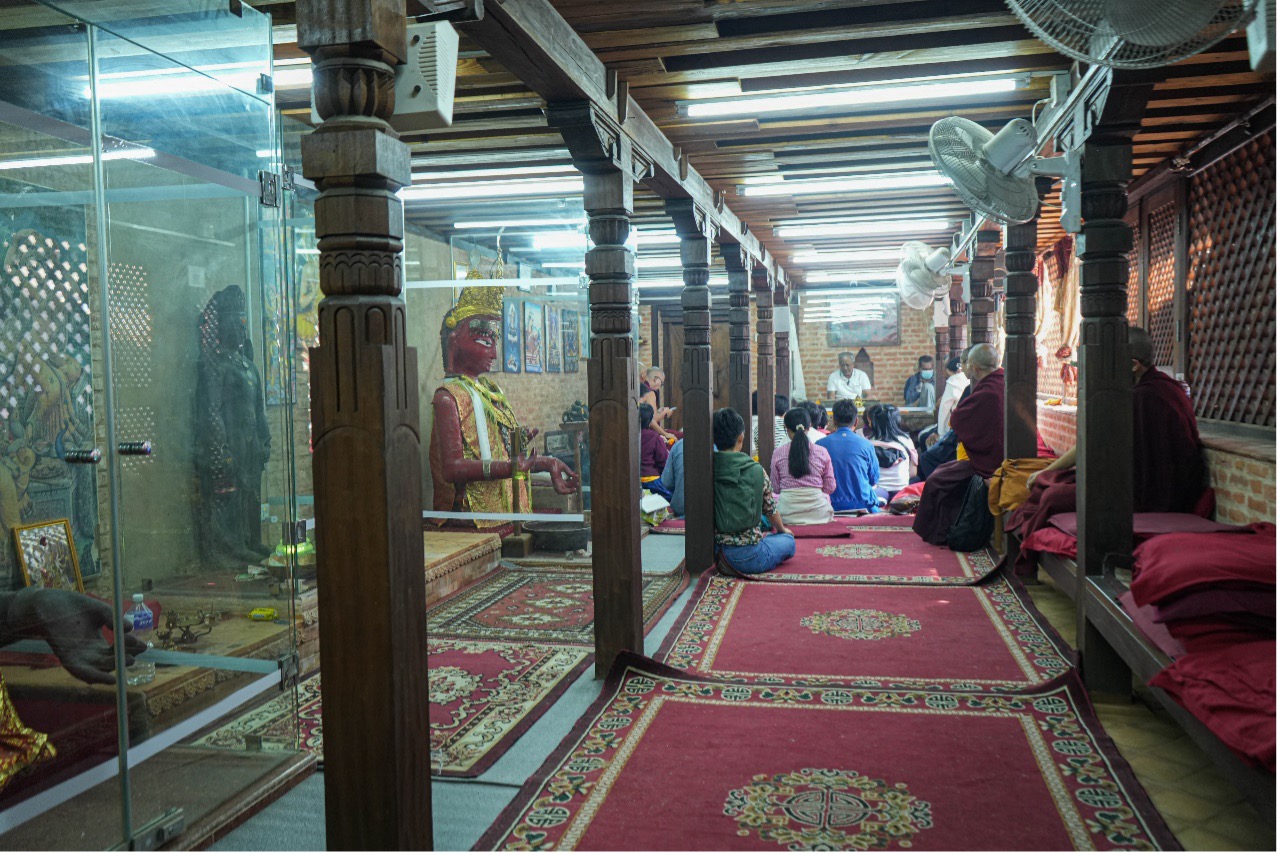
Eventually, when Buddhism was on the verge of decline in India, monks and travellers from China travelled to re-discover the Satasahasrika Prajnaparamita without knowledge of its exact location and form. The pilgrim monk Xuanzang (602–64) travelled from China to Central Asia and South Asia, mapping the major sites related to Shakyamuni Buddha, but if we look closely, his main focus was to find out about the location of the Satasahasrika Prajnaparamita. The Tang emperor wanted to acquire them to understand the true doctrine of the Buddha.
Xuanzang knew that the teachings of Shakyamuni Buddha had been passed on by Manjushri to the Nagas, and they had been guarding the knowledge ever since. When Xuanzang finally knew that the teachings of the Satasahasrika Prajnaparamita were being taught in Bikramshila Mahabihar, he requested translations and copies. However, the protector refused his request, and only the fifth book written by Nagarjuna was allowed to be copied and translated. He then took this copy back to China, and the book was translated in many languages.
The remaining four books of the Satasahasrika Prajnaparamita were passed down the royal lines of Kathmandu to the modern family of Pradhan. Mr. Rahendra Prasad Pradhan, the current family patriarch, says that the first five pages of the book were written by Manjushri himself. Though there were five books initially, the last part of the book is believed to be in the safe of the palace of King Pratap Malla.
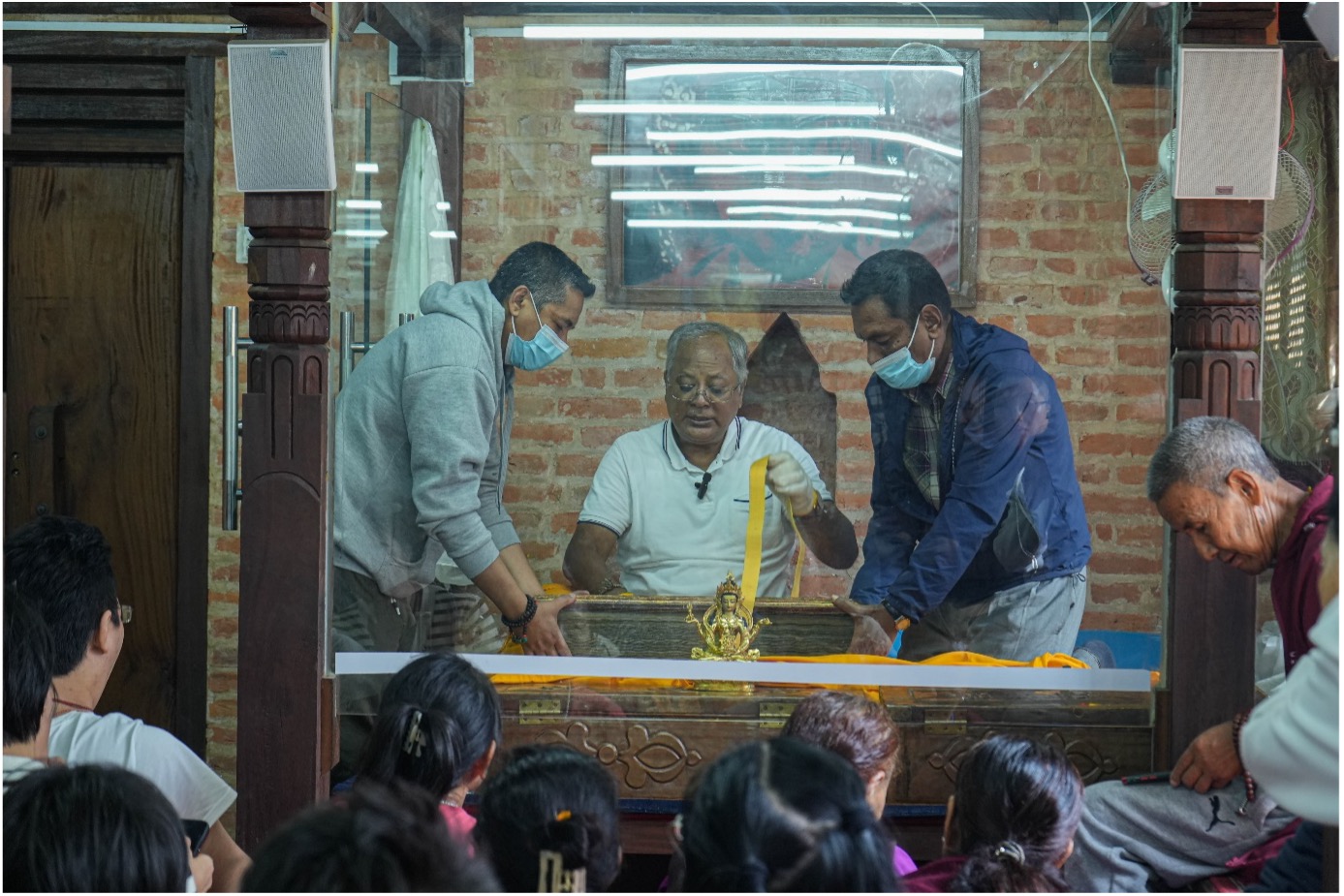
The Satasahasrika Prajnaparamita (or one lakh sutras in local Nepali language) still exists in Bikramshila Mahabihar. Locals and foreign visitors are given the opportunity to see the book and pay homage on various days of the week. The book is one of the finest examples of Nepalese textual evidence.
Traditional patra, with dark blue-colored papers, which are known as neela-patra, are used as the book’s material. The book is written in real golden ink in ancient Ranjana script. It is believed that the dark blue color is caused by the paste, which is made up of various wild herbs and helps to repel insects and mites. If the reader touches the papers with their bare hands, they might fall ill. Apparently, the Bajracharya priest of the Bihar is the only individual who can recite, decipher, and explain the exact meaning of the sutras to local communities.
There is a tradition of reciting and worshipping the book and copies of every Bihar of the Kathmandu Valley in the month of Gula, on the basis of the Newari Calendar. On normal days, the presenter from Bihar exhibits certain pages of the book with his mask and gloves on.
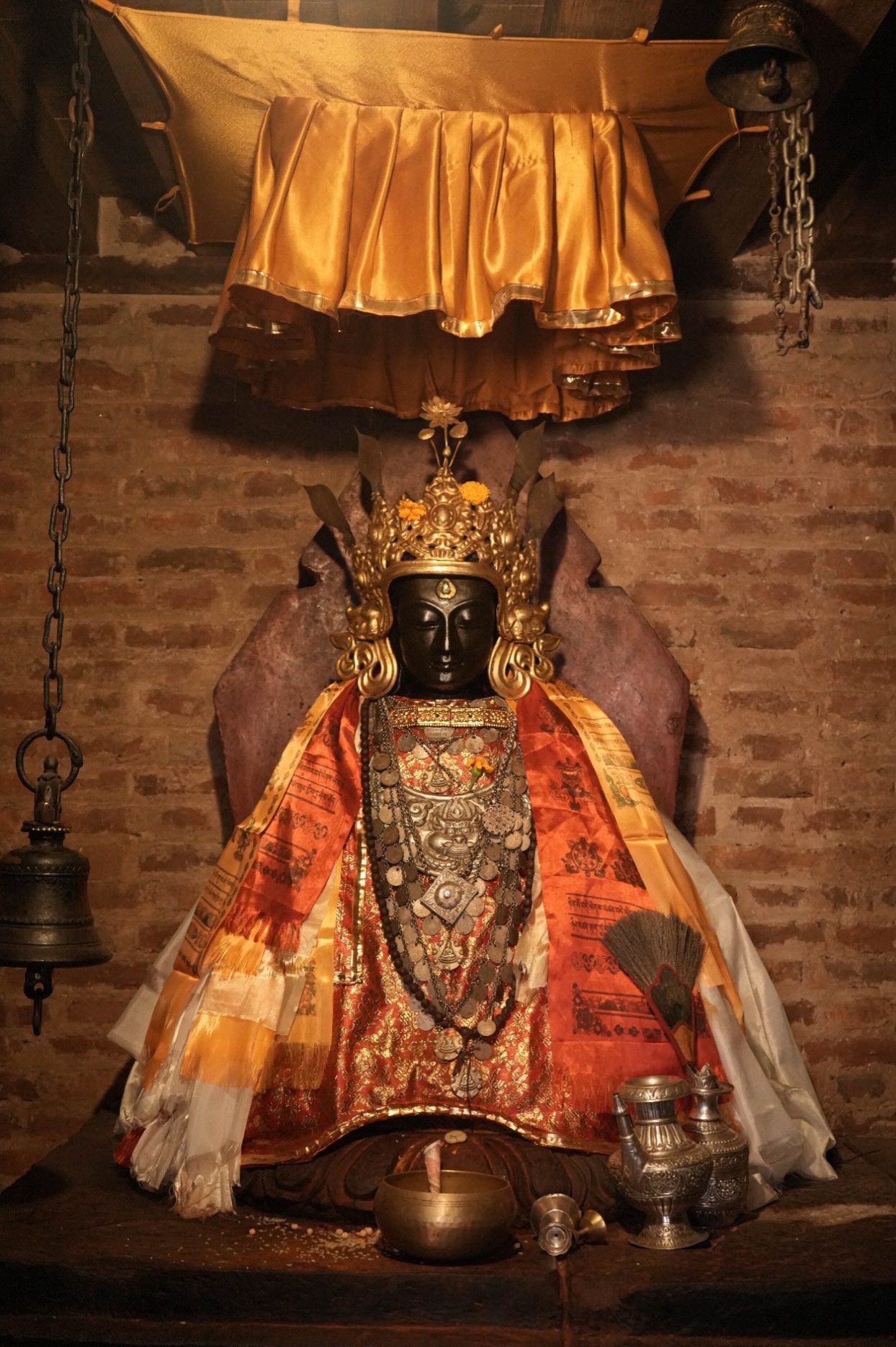
The feeling of being present in the very room and seeing the Satasahasrika Prajnaparamita is a magical experience. The book is dated back to 1223 BC but remains in good condition. For this, the conservators of Bikramshila Mahabihar must be appreciated alongside the 11th-century Buddhist master Atisha. He not only visited the Bihar but stayed there for two years, learning and meditating. He even contributed to the reconstruction of the monastery.
On the final page of the Satasahasrika Prajnaparamita’s fourth book is a testament by the youngest queen of 16th century king Pratap Mallam, a daughter of the Pradhan clan, that states that she has read all four books of the Satasahasrika Prajnaparamita Sutra and is very thankful for the opportunity. Pratap Malla and his skills as a learned ruler of Nepal are also mentioned. Also, there is a tradition in the Bihar community that to be able to study the Satasahasrika Prajnaparamita, someone must receive diksya (sacred approval) from the Bajracharya priest. I believe that this type of tradition aids in the protection and conservation of the scripture.
The Satasahasrika Prajnaparamita has not yet been digitized. When asked about their plan for digitization and modern conservation methods for the scripture, Nepalese authorities are open for potential collaborations in the future.


